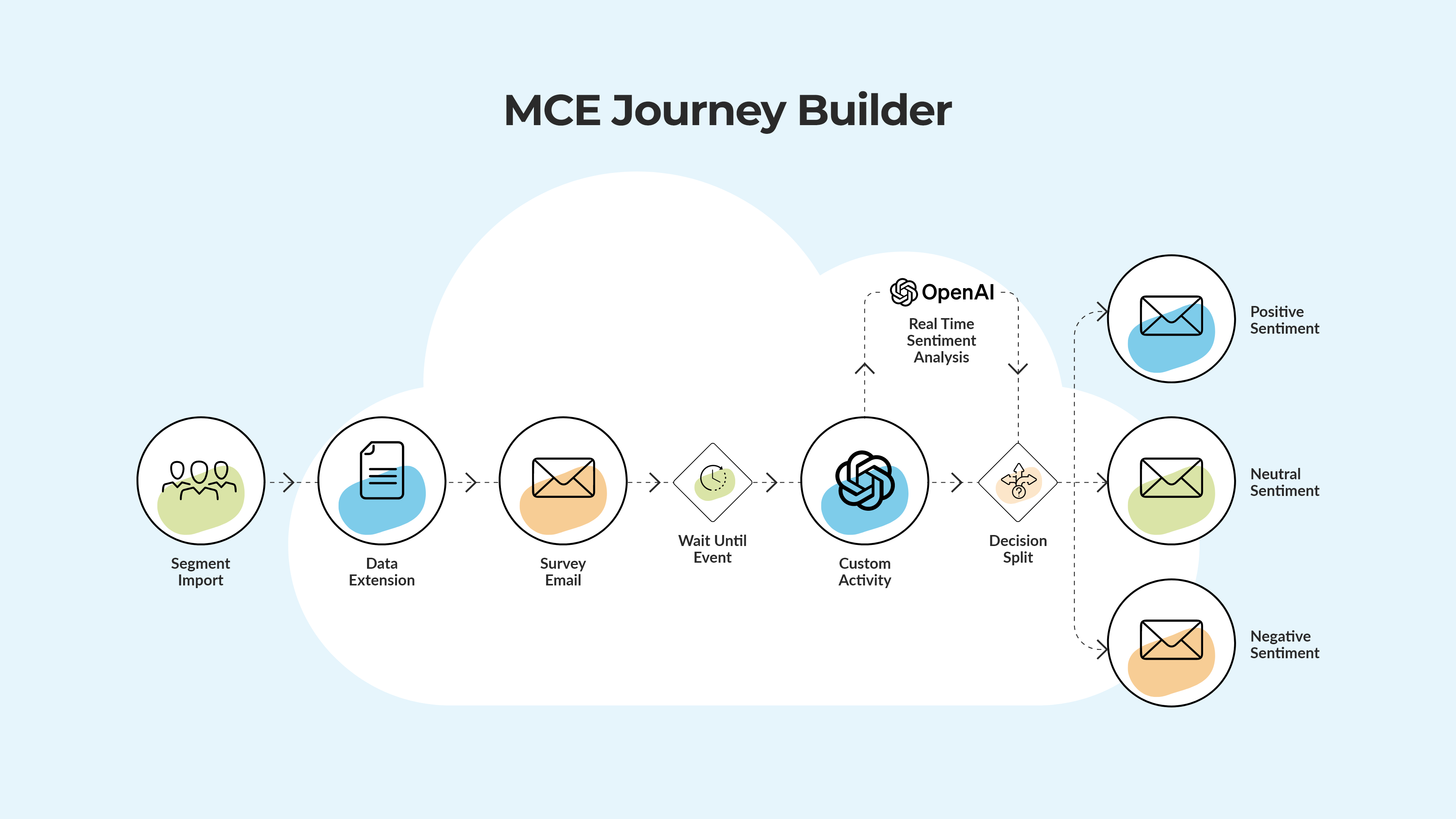Is Customer Loyalty Dead?
No. There. That was easy.
Alright, maybe we should dig in a little further. There are valid indicators and reasons for claims that customer loyalty as we know it is on the decline. Marketers face the challenges of constantly expanding marketplaces, being drowned out by an undying multitude of options for products and services, habitually changing (at a faster rate than ever) the landscape of capabilities for offerings and reach, and accessibility of product research, feedback, and information with technological ease.
Consumers also face hurdles that disincentivize the concept of loyalty including the average consumer’s diminishing attention span and increased valuation of time certainly present challenges to what we consider typical loyalty.
But at the end of the day, customer loyalty will always remain strong. Why? Because it’s human nature.
What is Customer Loyalty for Consumers?
We’re all consumers. Whether we’re consuming goods, services, or wildly mediocre blogs with lame attempts at humor. And we’re all faced with the daunting task of sifting through countless options every day. In a single day, the average adult makes 30,000–40,000 conscious decisions and is exposed to an estimated 10,000 product and service promotions. So how do we effectively navigate a world this complex? We simplify things. We narrow our options, shrink our consideration sets, automate decisions, and calibrate expectations. Cognitive load and paradox of choice are two interesting psychological principles that steer us toward the natural tendency of loyalty and repeat behavior. Here’s why:
● Efficiency
People are called “creatures of habit” for valid reason. Anytime we can demote a process or activity from the realm of conscious, effort-provoking task to automated habit (behavioral economist Daniel Kahneman would refer to these as Type 2 and Type 1 processing, respectively), then we free up our cognitive load. This refers to our nature as human beings and consumers to operate within the confines of a finite mental bandwidth. As consumers, the more of these thousands of choices we can demote to automatic decisioning, the easier our everyday lives become and the more cognitive load we free up for larger, more strategic, and more critical decisions.
● Peace of Mind
It would make sense that as the prevalence of options increases and we’re freely connected to more and more information to guide our decisions that we would make better choices and have more satisfaction from those purchase decisions. But what happens is actually the opposite. Paradox of choice tells us that navigating an abundance of options not only reduces our odds of making the right decision (or any decision at all for that matter), but it also decreases our likelihood of satisfaction with that purchase or process. In a sense, we treat the amount of cognitive bandwidth consumed by the process as a form of currency. The more we invest into a decision, the greater our expectations become for the output. And the more time, effort, and investment (financial and otherwise) we put into the process, the lower the odds of exceeding those expectations become.
So why do we develop a natural proclivity for a small handful of favored brands, products, and vendors? Because it’s human nature. And we’re inherently astute to the fact that easier decision-making will leave us more satisfied.
As long as customers are human and we participate in a free market, there will always naturally be a gravitation toward loyalty. Yes, there is a constantly expanding universe of competitors, increasing product differentiators, and a plethora of new options for customers every day. But this growing convolution of the marketplace is exactly what keeps the concept of customer loyalty in business.
What Does It Mean for Marketers?
So, we’ve established that customer loyalty is alive and well. And it will remain that way because we, as customers, rely on it to make our lives easier and bring greater satisfaction. But what does this mean for marketers? How can they foster a sense of loyalty among their end users?
We’ve likely all heard many of the stats around customer loyalty and retention:
● Loyalty customers are worth as much as 10x as much as their initial purchase
● Nearly 75% of a company’s revenue comes from repeat or loyal consumers
● Businesses can spend 5x to acquire a new customer as opposed to retaining a current or loyal one
Obviously, loyalty brings astronomical value to a company, but let’s unravel what exactly it means to have a “loyal customer.” Loyalty can exist within the confines of structured programs where common practices of point accruals, tiered statuses, gamification, VIP rewards, swipe cards, etc. are leveraged. But being a card-carrying member of a club isn’t the only form of customer loyalty. Customer loyalty often exists outside these defined lines of programmatic definition by consumers who enjoy or regularly choose to engage with your brand, products, or services. I like to define customer loyalty by three key words: perceived consistent value.
All three of these elements are critical in inspiring customer loyalty. I could have value perceived from a flash sale or a high-quality one-time purchase, but it’s not consistent; that won’t garner loyalty. I might go to the cheapest vendor because they have the lowest prices, but as soon as their competitor beats them, I’m gone and taking my apparent loyalty with me. I could have a superior product, but the brand hasn’t educated me on all the features and functionality, so I don’t perceive the full value. A brand has to deliver value, the value needs to be distinguishable by the consumer, and that value needs to be reliably delivered on a consistent basis.
Marketers can provide this perceived consistent value in the following ways (note: the more the merrier, but not all of these concepts need to be met in order to drive this type of value):
1. Price: Being the cheapest isn’t always an ideal strategy. You know the customer base to whom your brand and offerings attract (or hope to attract). Competitively priced goods/services help your customers realize value more easily, but remember that you’re not only competing against other brands or offerings. Your price is also being juxtaposed to the quality and experience of your own offering. Make sure it fits and leaves room to exceed expectations… consistently 😉
2. Values: What’s one principle of garnering loyalty? Quite literally your company’s values. When it’s evident to your end users that the qualities you espouse match the manner in which you operate, then you establish trust and an emotional connection to consumers who have or desire those values themselves. Whether these are related to a lifestyle (high-end products whose experience and service quality appropriately reflect the luxury lifestyle they pitch to their users) or personal/social (consumers see the effects of campaigns that contribute to causes they care about).
3. Quality: A superior product can help instill trust and loyalty. Especially when the value is clearly and concisely communicated to end users, is perceivably more valuable than the expectations, and all related effects/assets (e.g., associated services, activation, packaging) imbue that same quality. This bleeds into our next, and potentially most important, point.
4. Experience: There are multiple facets of the overall customer experience that marketers need to focus on in order to provide the perceivable consistent value that instills loyalty.
(a). Efficiency: Tailoring content or products is critical. A hyper-personalized experience not only lets your customer know they’re important to you, but it also makes their conversion experience easier. Remember what we said about time and energy being regarded as currency during the decision-making process? Allow them to spend less, get more out of the experience, and increase your odds of the end product’s quality (which presumably at this point, the marketer has no control over this variable) being outshined by the quality of experience.
Now, for those of you who are currently leveraging Salesforce Marketing Cloud Personalization (MCP), this may mean expanding beyond common use cases. The two most common MCP use cases are Abandonment Triggers and Product Recommendations. While these are great, they provide more value directly to the marketers as opposed to the consumer. Use cases that directly benefit the (soon to be “loyal”) customer can include:
i. Web or homepage personalization that allows users to pick up right where they last left off or welcomes/educates new visitors.
ii.Targeting specific offers based on behaviors, product/content affinities, explicit or implicit data inputs to customize the experience and provide benefits pertinent to specific users.
iii. Real-time email open feature that can adapt your messaging to be tailored to the most recent experience your user has had, be it in app, offline, over customer service calls, on your website, or elsewhere.
(b). Conversion Experience: The conversion process isn’t just time leading up to the purchase event. The point of monetary conversion may be over, but the cognitive load for the consumer is still very much in process (e.g., Was this a good purchase? Will I be satisfied? When will it arrive? Was I hoodwinked?). And during this time, their perception of your brand and their experience is highly impressionable. Post-purchase journeys help relieve this processing, instill confidence in the purchase, and can increase the perceived value of the product once received. These journeys can be more than just a transactional series.
i. Anticipation journeys: A confirmation message followed by order processing or product status updates (for instance, if your product is something customized or assembled upon purchase, provide updates as to the steps, what’s being configured, and the quality or effort that’s going into it), shipping updates, and concluded by feedback requests all provide perceived enhanced value to the customer experience.
ii. Product reviews and CSAT surveys are another asset that provides great feedback data for the business, but also correlates to higher perceived satisfaction than providers who don’t ask for reviews.
(c). Customer Service: One of the areas where perceived value is most volatilely susceptible to positive or negative change is in the customer service process.
i. Be proactive about monitoring and resolving issues. If you’re a Salesforce Data Cloud user, consider use cases such as sending Data Actions to Service Cloud upon web visitors exhibiting signs of service issues. This may take place in the form of someone browsing help docs or searching product FAQs. If they spend a certain amount of time on these pages or visit a particular threshold of help docs, you can proactively create a case in Service Cloud to help resolve a potential issue.
ii. When you do ask for feedback, be expedient with any negative feedback. One helpful idea that comes to mind is an innovative technique ListEngage developed to react to feedback surveys in near real-time. A post-purchase feedback request is sent in an email in Journey Builder. The response is captured in a Data Extension and a custom activity reaches out to ChatGPT for real-time sentiment analysis. A follow-up is sent based on the response. Particularly, if it’s a negative response then it can be routed directly to Service Cloud to create a case. If Auto Assign rules are in place in Service Cloud, then the journey can even auto-populate the content in the subsequent message expressing concern over the negative feedback, the fact that a customer service ticket has already been generated in an effort to resolve the issue, and even pull in dynamic content displaying who their service rep will be and the timeframe they can expect to hear from them.

iii. Again, this is the value of decreasing the user’s time, energy and mental bandwidth in order to increase their odds of satisfaction and loyalty. Being proactive or reacting in near real-time shows your customers they are a priority to you and greatly improves your odds of retention.
Ultimately, customer loyalty is not going anywhere. Customers will always tend toward efficiency, satisfaction and consistent value. But marketers do have more voices and options to compete against than ever before, and the tactics and technologies to gain that loyalty are a constantly evolving landscape. It’s because of these changes and hypergrowth that the concept and convenience of loyalty is more pertinent to customers now than ever.


